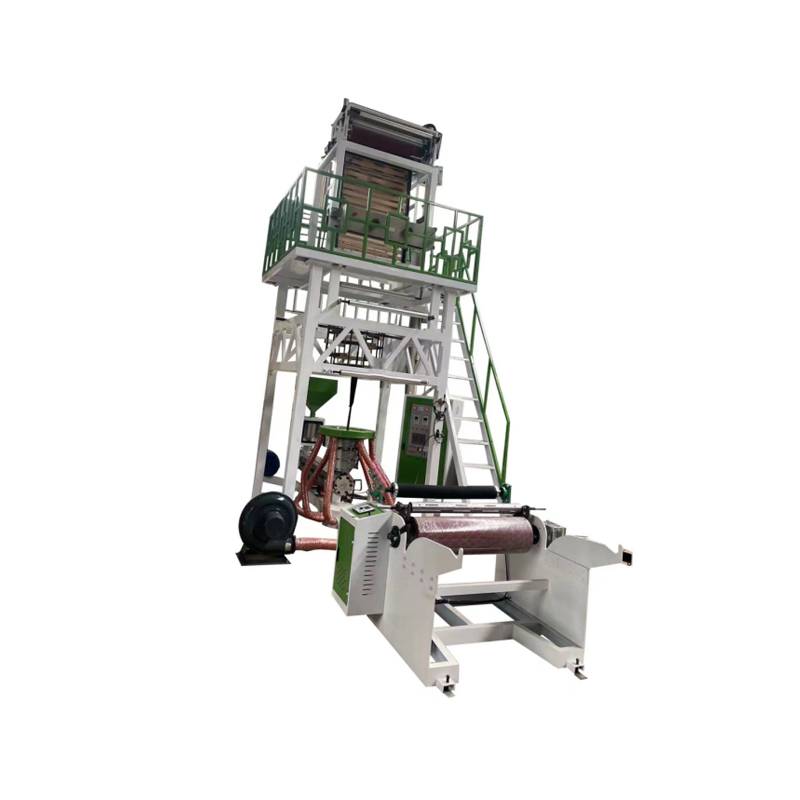Performance-Driven Design: How Low Pressure Blown Film Machines Are Redefining Film Extrusion Standards
 By Admin
By Admin
In the competitive world of film extrusion, where efficiency, precision, and material performance drive profitability, the Low Pressure Blown Film Machine (LPBFM) has emerged as a disruptive technology. Moving away from traditional high-pressure systems, LPBFMs offer a new performance paradigm that emphasizes control, energy efficiency, and film quality without compromising throughput.
As packaging companies look for ways to optimize operations while adhering to increasingly strict environmental regulations, the performance characteristics of these low pressure systems are turning heads across the industry.
1. Thermal Stability Enhances Film Uniformity
One of the performance traits of LPBFMs is thermal stability throughout the extrusion process. Operating at lower temperatures than conventional machines, LPBFMs significantly reduce thermal degradation of polymers. This ensures consistent melt viscosity, resulting in film gauge control.
According to Dr. Kentaro Aoki, Senior Process Engineer at Japan FilmTech, “Lower thermal stress on resins reduces volatility and allows the polymer chains to maintain integrity. That translates directly into better film strength, fewer defects, and more stable processing conditions.”
The improved temperature profile also leads to fewer hot spots in the die head and more predictable cooling, giving manufacturers finer control over film thickness across the entire roll.
2. Lower Operating Pressure Reduces Shear Stress and Wear
Traditional blown film systems rely on high screw speeds and pressure to melt and push material through the die, which increases shear stress on both the polymer and mechanical parts. LPBFMs take a different route—by using optimized screw geometries and barrel designs, they achieve melt homogeneity at lower mechanical stress levels.

This not only preserves the molecular weight of sensitive materials like biodegradable polymers but also reduces mechanical wear on machine components, particularly on screws, barrels, and die lips.
3. Enhanced Bubble Stability Increases Productivity
Film extrusion heavily depends on bubble stability during the inflation stage. LPBFMs excel in this area due to the gentle, low-turbulence flow dynamics created by the lower pressure profile. Combined with advanced cooling ring designs and integrated air flow controls, this leads to more stable bubbles, especially at high output speeds.
Stable bubble formation ensures fewer line stoppages, reduces film wrinkling, and lowers the chance of film breakage—key factors for maintaining consistent production, especially for thin-gauge films used in food and hygiene packaging.
4. Optical and Mechanical Properties
Thanks to the lower temperature and stress environment, films produced on LPBFMs demonstrate optical properties, including higher gloss, better clarity, and reduced haze. This is particularly important for retail packaging where product visibility is a selling point.
Mechanical testing also shows improvement. LPBFM-produced films tend to have higher elongation at break, improved puncture resistance, and more uniform tensile strength across the web. These properties allow manufacturers to reduce film thickness without sacrificing performance—yielding material savings and lighter packaging weight.
5. Integrated Control Systems Enable Precision Tuning
Modern LPBFMs are equipped with advanced digital control platforms, allowing operators to fine-tune parameters such as melt temperature, bubble ratio, haul-off speed, and cooling intensity in real time. Many machines also feature AI-driven systems that analyze film quality continuously and make micro-adjustments automatically.
This high degree of automation reduces reliance on operator expertise and shortens startup and changeover times—key performance metrics in just-in-time manufacturing environments.
Looking Ahead
With performance benchmarks that rival or exceed those of traditional systems, Low Pressure Blown Film Machines are no longer niche solutions. They are fast becoming industry standards, particularly in applications demanding high film clarity, material efficiency, and operational consistency.
As global demand for flexible packaging continues to grow—driven by sectors like food delivery, medical supplies, and agriculture—the performance profile of LPBFMs positions them as a solution for companies seeking reliable, scalable, and future-ready production technologies.




